- ~
- ~
- ~
- ~
- ~
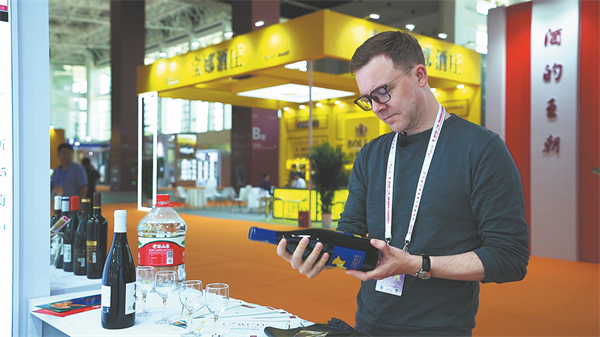
China Daily reporter Owen Fishwick examines a bottle of wine at the third China (Ningxia) International Wine Culture and Tourism Expo held in early June. FU XUEWEN/FOR CHINA DAILY
Vintners win international awards, gain at home, export to 40 countries, Owen Fishwick reports in Yinchuan.
There's something about the soil in the eastern foothills of the Helan Mountains in the Ningxia Hui autonomous region. The fine silt is so dry that it retains the blazing heat that beats down on it for 3,000 hours each year. Its qualities have led the autonomous region to begin to eke out name for itself in the world of wine.
"The wine industry here is growing each year, and more and more people from outside China are coming to visit this region to find out about it," says Henry Ho, president of the Hong Kong Wine and Spirits Association. He was one of dozens of wine industry experts attending the third China (Ningxia) International Wine Culture and Tourism Expo held in early June.
June is the perfect time of year for Ningxia's over 200 winemakers to introduce and sell their latest vintages to both domestic and overseas markets before the busy harvest season begins, running from August to October.
The wine industry in Ningxia, born in the 1980s with the opening of the State-owned Xixia King winery, trod a slow development path. The central government granted the region its own geographical indication designation in 2003. Such indications are given to products with a specific location origin and qualities that are linked to that origin.
Since then, the Ningxia wine industry has risen to become China's eighth most valuable geographic indication brand, valued at 32 billion yuan ($4.48 billion), producing 138 million bottles annually, exporting to more than 40 countries worldwide and winning numerous international awards and accolades, such as at the Decanter World Wine Awards and Concours Mondial de Bruxelles.
One such winner of Decanter plaudits is Fei Tswei, which won a silver in 2020 for its vintage using a rich blend of cabernet sauvignon and marselan grapes, described as having a "black treacle nose", "aromas of dense rich black fruits" and being "peppery on the palate" with "assertive tannins".
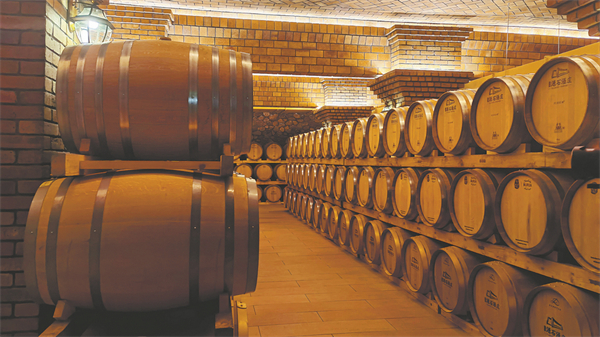
Barrels of wine are stored in cellars underground in order to ensure the humidity level is kept between 65 and 70 percent. FU XUEWEN/FOR CHINA DAILY
Despite success in competitions globally, wines from Ningxia have yet to establish a firm seat at the table in terms of international markets, with traditional heavyweights from Europe, South America, the United States and Australia still dominating market share.
"We do well in Japan, Singapore, Asian markets and we are making efforts to get a better foothold in Europe, but actually, the United Kingdom seems the most promising for us," says Zhang Yanli, the passionate owner of Ningxia winemaker Fei Tswei. She's keen to tell the story of Chinese wine, especially the wine from Ningxia, and says the UK market, unlike other European countries, is more open to trying new things.
"Though they do make some amazing sparkling wines (in the UK), they don't have a wine industry like France or Italy, so they don't feel a sense of national loyalty, and also the British are very passionate and knowledgeable when it comes to wine," Zhang says.
The winemaker is particularly proud of her Ningxia wines being served at the British Museum in London earlier this year during the grand opening of the exhibition China's Hidden Century.
"This was a very special moment for us because we have the rich history and the story of China, and we have wine from China, which is part of that story," she says.
Another Ningxia winery that is embracing its cultural heritage is Lansai. The winery, run in part by Zeng Xiaojun, began building European-style buildings for its operations, but scrapped that plan after a 2013 European wine-tasting tour.
"It's very important that we celebrate our Chinese culture and create our own story, and that is what can make our brand stand out from others," says Zeng, as she gives a tour of her Chinese-inspired vineyard.
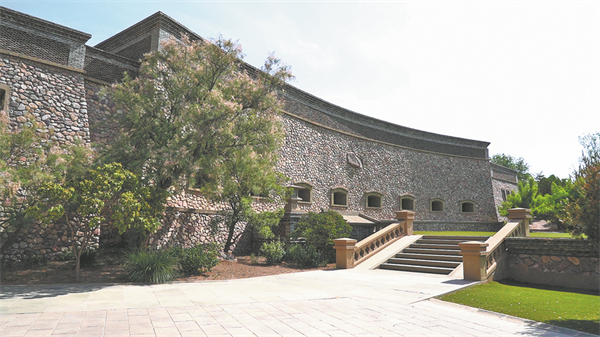
The fermentation vats at Ningxia's Chateau Yuanshi are housed in a building made using stones recovered from a nearby quarry. FU XUEWEN/FOR CHINA DAILY
Gone are the mock chateaus or brash buildings with Bavarian flourishes, and instead the winery is complete with Chinese traditional courtyards, gray brickwork, arched roof-tiling and animal statues of the Chinese zodiac.
Lansai won a Decanter gold in 2020 for its Yu Moli cabernet sauvignon, described as having a "classic nose", "elegant aromas of roasted coffee and leather", "assertive and polished tannins" and a "lovely long finish".
"Chinese culture can be seen in all our branding. It connects with not just Chinese people, but can connect with other people in other markets, we hope," Zeng says.
A case in point, on one bottle of marselan — a French wine grape variety that has found a home in Ningxia for its ability to produce highly aromatic medium-bodied reds — a glorious Chinese dragon snakes its body around the glass. Zeng says the significance of the dragon is that the ridges along its spine resemble the 24 peaks running the length of the Helan Mountains and mirror the 24 Chinese lunar terms that have been so crucial to and ingrained in the nation's agricultural history.
Convincing Chinese consumers has been no easy task, but the efforts of Chinese winemakers have paid off. China has risen to become the eighth-biggest wine market in the world, with a growing number of Chinese consumers switching from foreign brands to local producers.
However, cracking traditional wine markets overseas is something that will take greater patience, effort and time, experts say. In the UK, several major retailers stock wine made in Ningxia, so there are signs at least that the world has sat up and taken notice.
The International Organisation of Vine and Wine, a powerful Dijon-based intergovernmental body that deals with the technical and scientific aspects of viticulture and winemaking, has thrown its support behind China's burgeoning winemaking industry.
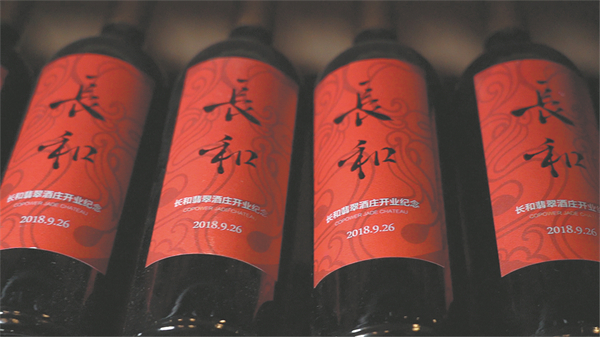
Bottles of wine produced by Copower Jade Chateau feature handwritten Chinese script. FU XUEWEN/FOR CHINA DAILY
The director general of the organization, Pau Roca, said in a speech at the opening ceremony of this year's international wine expo in Ningxia: "China has all the potential, research and new technologies to have its rightful share in shaping the global vine and wine tendencies and cannot continue to be isolated in this matter.
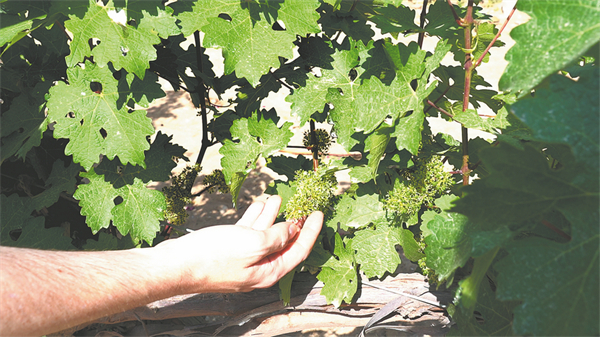
Ningxia has become well-known for its cultivation of marselan wine grapes, but growers continue to expand varieties. FU XUEWEN/FOR CHINA DAILY
"As an example, Ningxia's success in becoming the first Chinese (winemaking) pilot zone is enhancing its performance and international recognition. To continue working toward that future, we now look forward to having China as a full member very soon, with all the rights and influence the nation deserves."
A few miles down the road from the Helan Mountains is Shuidonggou, one of the earliest Paleolithic excavation sites in China and often called the birthplace of China's prehistoric archaeology. Its sands and soil reveal the rich stories of China's ancient past, dating back over 30,000 years. The fine, gray sandy soil at the foot of the Helan Mountains may help add a new chapter.
京ICP备13028878号-6





